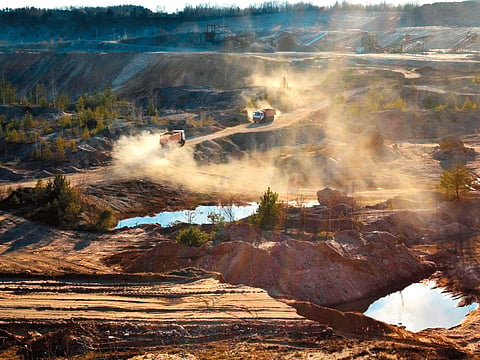Can Armenia balance mining scars with biodiversity goals at COP17?
Armenia plans to confront significant pollution from mining in the leadup to hosting COP17

As Armenia gears up to host COP17, the United Nations’ largest biodiversity conference in the region, in October 2026, the country is under growing international scrutiny over the environmental consequences of decades of intensive mining. Experts warn that Armenia’s mining legacy could cast a long shadow over its role as host of the landmark summit.
Armenia’s economy has long relied on mining, with copper, gold, and molybdenum fueling growth. However, the environmental toll has been significant. Over 20 tailings ponds, filled with hazardous byproducts such as heavy metals, cyanides, and sulphides, now pose urgent ecological and public health risks.
Many of these reservoirs are located in seismically active zones, making them vulnerable to earthquakes, floods, or landslides—events that could trigger disasters comparable to some of Europe’s worst mining accidents.
A World Bank assessment has described the tailings ponds as a “significant source of pollution,” highlighting outdated maintenance, poor oversight, and the absence of a centralized monitoring system. Unlike European Union countries, which enforce strict safety directives, Armenia lacks consistent inspections and emergency preparedness protocols.
Local communities have already reported environmental and health impacts. In the Lori region, the Tegut pond has contaminated rivers and degraded soil quality. The Artsvanik pond in southern Armenia has led to a decline in biodiversity downstream.
In the fertile Ararat Valley, over 15 million cubic meters of cyanide-laced waste raise concerns about contamination of food exports and public health. Elevated levels of arsenic, cadmium, and mercury have been detected in water and farmlands, alarming health experts.
“Tailings ponds are not abstract engineering structures. They are directly tied to the water, air, and soil that sustain human life,” said Alexander Dounchev, independent environmental expert from Bulgaria. “Without urgent intervention, Armenia risks facing an ecological and public health crisis with consequences far beyond its borders.”
As Armenia positions itself as a champion of biodiversity for COP17, delegates are expected to focus on protecting rare species such as the Armenian mouflon and the Caucasian leopard, alongside broader environmental restoration goals. Yet critics caution that the country’s toxic mining legacy could undermine its credibility as a host committed to conservation.
With the eyes of the world soon on Yerevan, the critical question remains: Will Armenia take decisive action to confront its toxic inheritance, or will its mining scars overshadow its moment on the global biodiversity stage?
Sign up for the Daily Briefing
Get the latest news and updates straight to your inbox



